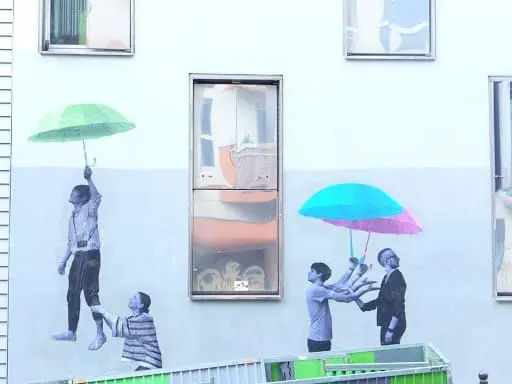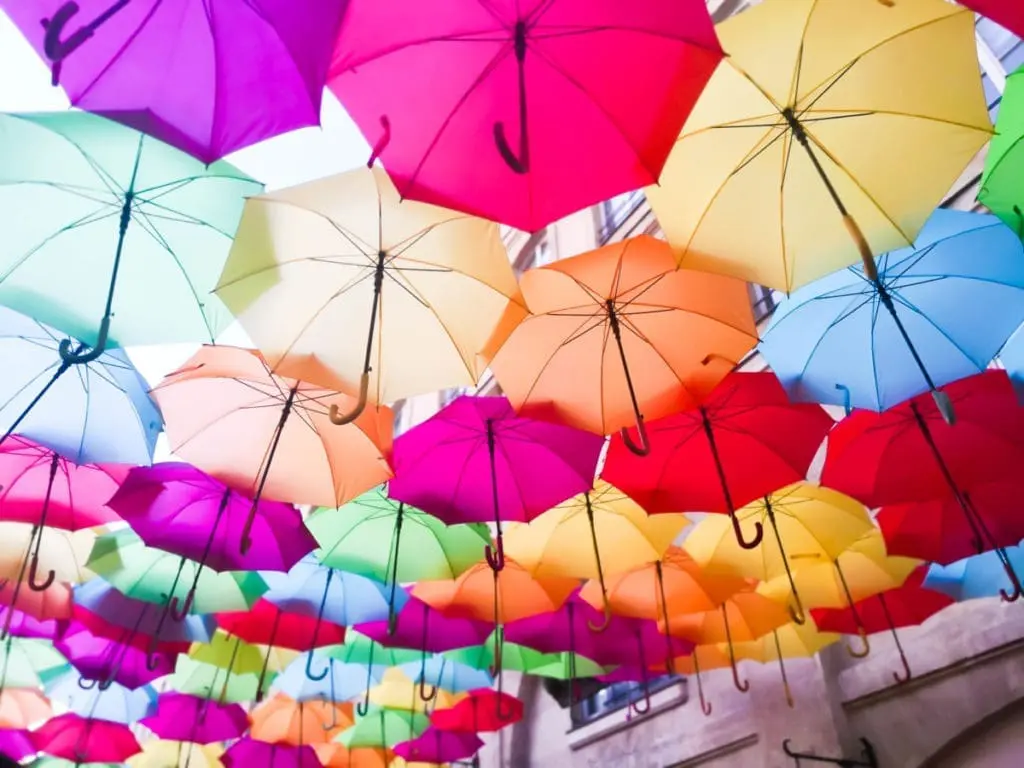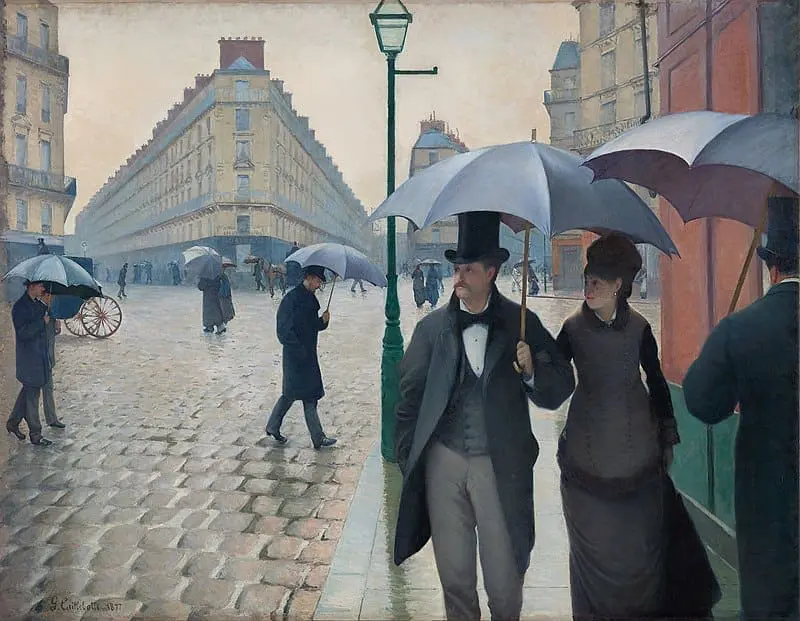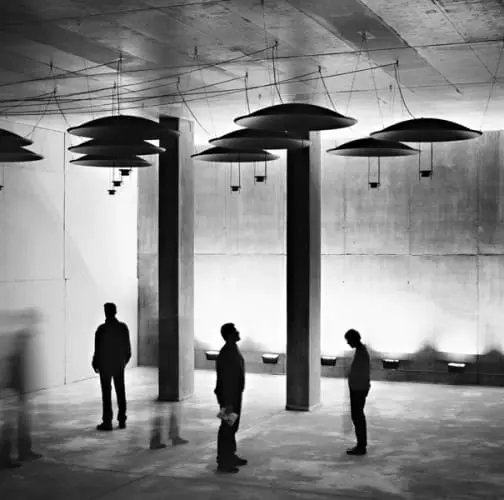Livraison Offerte en France métropolitaine à partir de 250€

In Paris, umbrellas adorn the streets. The collective "Le Mouvement" created by Romano, Riks, and Tiez has chosen to reach out to refugees at the Emaüs de la Chapelle center in the 18th arrondissement. The idea: to restore joy, hope, and color to the neighborhoods... But also to create connections between people. This is how the project "Umbrellas throughout Paris" was born. Based on photos, collages, and encounters... these works bring together people who don't know each other under an umbrella. These creations convey a message of openness and solidarity, campaigning for a more diverse society.
As part of her “Umbrella Sky Project,” Portuguese artist Patricia Cunha hangs 800 colorful umbrellas a few meters from the Madeleine. This umbrella sky attracts and amazes many passersby, tourists, and curious onlookers. The umbrella becomes the star of modern art. The Portuguese artist drew her inspiration from the film Mary Poppins, a film in which the umbrella, the famous nanny's only means of transportation, occupies a central place! The concept: to attract the eye to places sometimes unknown to the public and spread joy through color, “coloring life.” This concept has since developed in many cities such as Cherbourg-en-Cotentin, Carcassonne, Arles, Toulouse, Béziers, and even Tokyo, Seoul, and Pensacola in the United States.

Known for his boldness, Greek artist Zongolopoulos was largely inspired by the umbrella. Indeed, the choice of materials he uses to create his works is highly original. Amidst the plexiglass, locks, springs, and pipes, we discover umbrellas! It is particularly the use of umbrellas in Zongolopoulos's sculptures that characterizes the artist.
''In a way, our life is linked to the umbrella in different situations, like when we have a date or when we are waiting for a friend... It always appears as a means of defense against nature.'' Zongolopoulos' famous sculpture “Umbrellas,” created in 1991, has even become a meeting place in Thessaloniki, Greece.


Painting is probably where we find the umbrella most often, and without apparent boundaries. Here are some examples:
The umbrella was a great success among the surrealists. It can be seen in Magritte's famous painting from 1959: “Hegel's Holiday”.
In this painting, the Belgian surrealist painter confronts contradictory objects: he associates the umbrella which repels water and the glass of water which contains water!


“Beautiful like the chance encounter on a dissection table of a sewing machine and a broken umbrella.” This famous quote from Lautréamont, which has neither head nor tail, was illustrated by Agnès Varda, photographer, visual artist and film director, in an atypical triptych!
The umbrella is featured in various sound works and performances. It is transformed into a sound diffuser in the work Sono Pluie by the Digital Samovar collective, and it becomes an architectural object with the artist Bernhard Leitner.
The umbrella is also found in opera, dance, and song. Let's mention Brassens with his song "Un ptit coin de parapluie" (A Little Corner of an Umbrella). The umbrella remains a source of ideas in many fields. It inspires so much that China created the Umbrella Museum: culture, history, works related to the umbrella...
